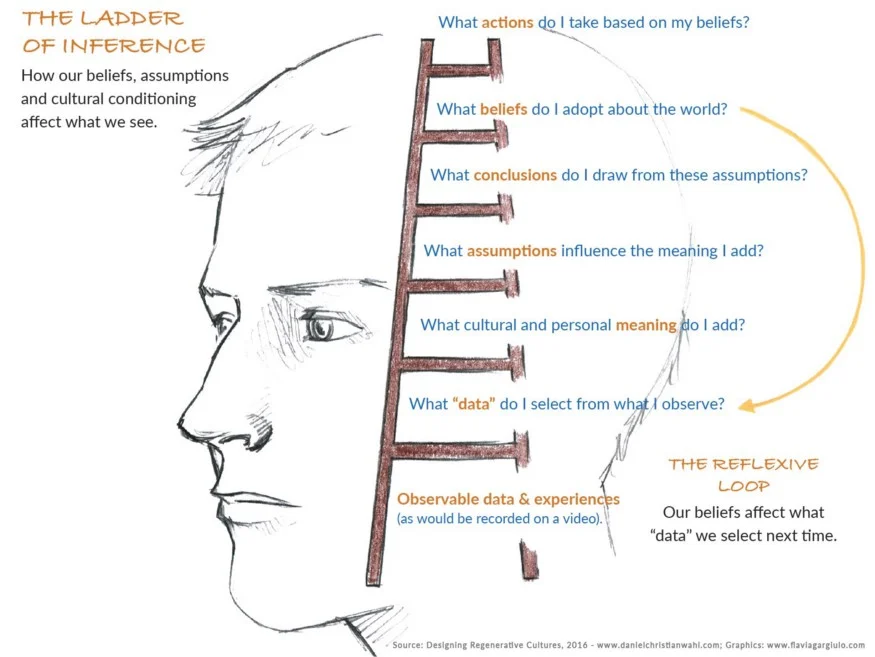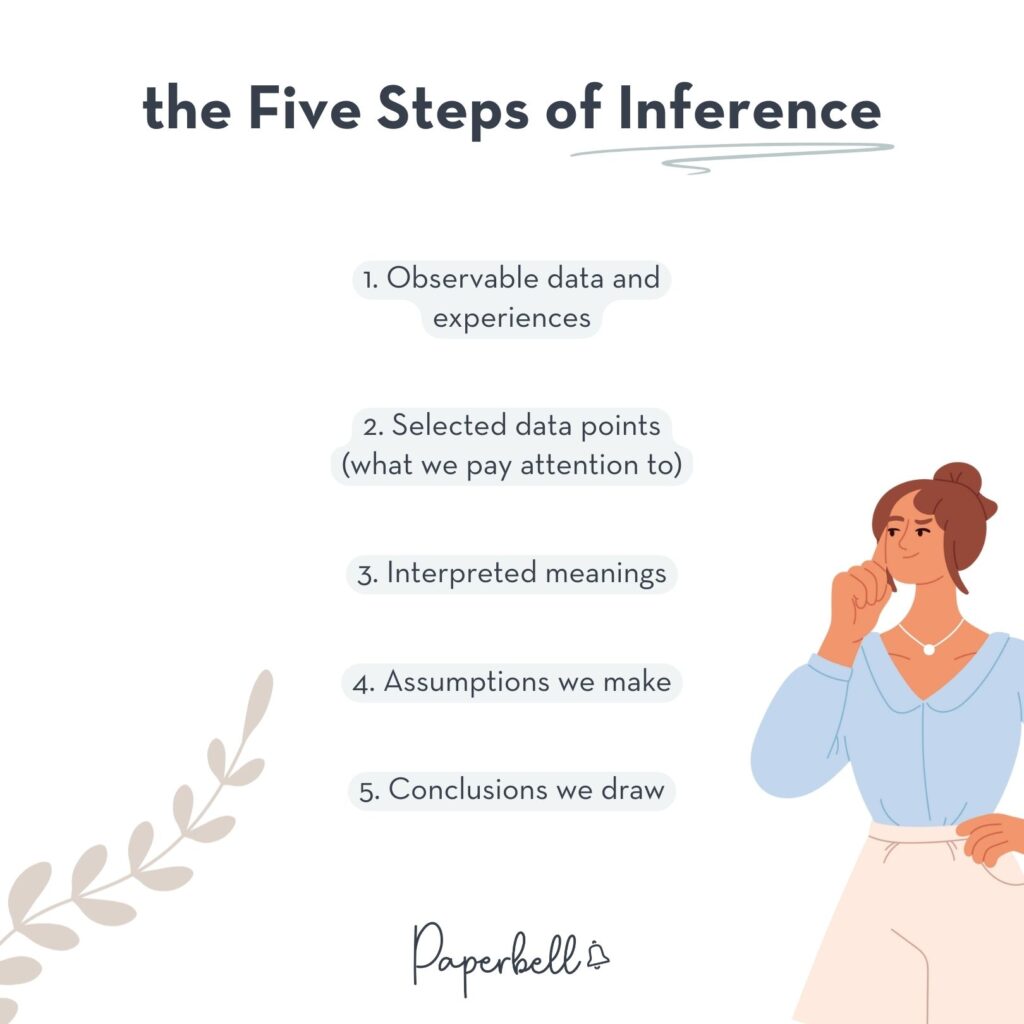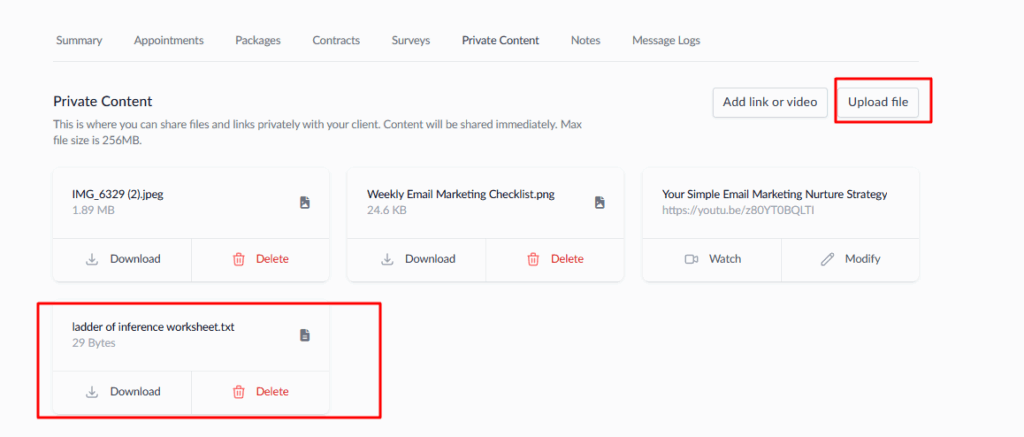If you’re a life coach, you’ve probably sat across from clients who seem stuck in patterns of poor decision-making.
They jump to conclusions, make assumptions that hurt their relationships, or get trapped in limiting beliefs that hold them back from their goals.
What if I told you there’s a simple framework that can help your clients recognize these patterns and make dramatically better choices?
Enter the ladder of inference. This is a powerful coaching tool that reveals how our minds leap from observable facts to actions, often skipping crucial steps along the way.
In this guide, I’ll walk you through everything you need to know about using the ladder of inference in your coaching business, complete with examples and practical worksheets you can use immediately.
What is the Ladder of Inference?
The ladder of inference is a mental model that describes how we process available data and make decisions. It was originally developed by organizational psychologist Chris Argyris and popularized by Peter Senge in his book, “The Fifth Discipline.”
Think of it as a step-by-step map showing how our minds move from raw data to taking action.
Here’s why this matters so much in coaching relationships, and even in our own thought processes. Most of us climb this ladder so quickly that we don’t even realize we’re doing it.
We:
- See something happen (available data)
- Instantly interpret what it means
- Make assumptions about it
- Draw conclusions
- And then act
All of the above happens in a matter of seconds.

But the problem is that we often miss important information or make faulty assumptions along the way.
This leads us to decisions that don’t serve us well, as well as unconscious biases. Over time, this leads to a reflexive loop of beliefs that influence certain data we’ll focus on most next time.
The negative consequences can quickly pile up when you consider how many complex situations could be interpreted differently if you focused on different data.
For your clients, understanding the ladder of inference means they can slow down their thinking process and make more intentional choices. Instead of reacting automatically to situations, they learn to question their assumptions and consider alternative perspectives.
Pro tip: Paperbell makes it easy to deliver worksheets and resources to your coaching clients, automatically. Upload your ladder of inference materials to your client portal and track their progress all in one place by claiming your free account.
What are the Five Steps of Inference?

Let’s break down each step of the ladder so you can explain it clearly to your clients and help them recognize their own patterns and personal biases.
1. Observable data and experiences
This is the foundation (the actual facts of what happened).
Think of it as what a video camera would record.
If your client says, “My boss yelled at me,” the observable yet limited data might be:
“My boss spoke in a raised voice and said the project deadline was missed.”
2. Selected data points (what we pay attention to)
Out of all the available information, we naturally select certain pieces to focus on. Our brains can’t process everything, so we filter, often based on our prior experiences.
Your client might focus on their boss’s tone of voice while ignoring that the boss also said the project had good potential.
3. Interpreted meanings
This is the step where we start adding our own spin to the selected data.
Your client might interpret the raised voice as “anger directed at me personally” rather than “frustration about the situation.”
4. Assumptions we make
Based on our interpretations, we make assumptions about what’s really going on.
Your client might assume: “My boss thinks I’m incompetent” or “I’m going to get fired.”
5. Conclusions we draw
These assumptions lead to broader conclusions about ourselves, others, or situations.
Your client concludes: “I’m bad at my job” or “This workplace is toxic.”
Actions we take based on our conclusions
Finally, we act on these conclusions.
Your client might:
- Start job hunting
- Withdraw from team meetings
- Have a defensive conversation with their boss
Each step builds on the previous one, so if we get something wrong early in the process, it affects everything that follows.
How are Life Coaches Using the Ladder of Inference?
Smart coaches are integrating ladder of inference life coaching techniques into multiple areas of their practice. Here’s how you can use this framework to create breakthrough moments with your clients and help them build stronger relationships.
Breaking down client limiting beliefs
When clients say things like “I’m not good enough” or “I always mess things up,” you can walk them back down the ladder:
- What specific data points led to this belief?
- What did they choose to focus on and assign meaning to?
- What alternative explanations are possible apart from the initial snap judgments?
Improving client communication skills
The ladder of inference is gold for relationship coaching and dispute resolution.
When clients have conflicts, you can help them separate facts from assumptions based on limited interpretations. Instead of “He doesn’t care about me,” you might discover the actual data was, “He didn’t text back for three hours.”
Helping clients make better career decisions
Career transitions are full of assumption-making.
A client might conclude they’re “not cut out for leadership” based on one difficult conversation. The ladder helps you explore additional data, which helps them understand what actually happened versus what they’re making it mean.
Supporting relationship coaching
Whether it’s romantic partnerships or family dynamics, the ladder of inference reveals how quickly we create stories about other people’s motivations.
Clients learn to check their assumptions before reacting.
Enhancing goal-setting sessions
When clients resist setting bigger goals during a coaching assessment, there’s usually a ladder at work.
They’ve concluded they “can’t” do something based on past experiences, but examining each step often reveals the conclusion isn’t as solid as it seemed.
Here’s one of my ladder of inference real-life examples:
I worked with a client who wanted to start email marketing for her business again, but kept concluding she “wasn’t ready.” When we climbed down the ladder together, we discovered her conclusion was based on a single subscriber who replied to a past email she’d sent to complain about her “spamming.”
That’s it. One piece of selected data had created an entire story about email marketing, ignoring the dozens of positive replies she’d also received.
Using the Ladder of Inference Worksheet with Clients
A ladder of inference worksheet makes this framework much easier to use in your coaching sessions.
Here’s how to implement it effectively.
When to introduce the worksheet in coaching sessions
The worksheet works best when clients are stuck in repetitive thinking patterns or facing a specific decision.
Don’t introduce it during emotional moments or times when they’re dealing with big feelings. Instead, wait until your client can think clearly and is open to examining their thought process.
Consider bringing out the worksheet when I hear clients making definitive statements based on limited information, or when they’re avoiding action because of fears that seem disproportionate to the actual situation.
Step-by-step guide for coaches
Start by having your client describe a situation they’re struggling with. Then, work through the worksheet together:
- First, help them identify the raw, observable data. Keep asking “What exactly happened?” until you get to the facts that anyone would agree on.
- Next, explore what data they selected. Ask “Out of everything that happened, what did you focus on?” and “What might you have overlooked?”
- Then examine their interpretations. “How did you make sense of what you observed?” and “What other ways could this be interpreted?”
- Look at their assumptions. “What did you assume was true?” and “How certain are you about these assumptions?”
- Finally, examine their conclusions and resulting actions. “What did you decide this meant?” and “How did you act based on these conclusions?”
Tips for making it feel natural, not academic
The key is to make this feel like a conversation, not a psychology lesson.
Use your client’s own language and keep returning to their specific situation.
For example, instead of saying “Now we’re moving to step three,” you might say “So when you saw your boss’s reaction, what did you think it meant?”
Keep the energy curious rather than corrective. You’re not trying to prove your client wrong, but helping them explore their thinking process.
How to store and track client worksheets using Paperbell
When you run your coaching business on Paperbell, sharing your notes and worksheets about the Ladder of Inference becomes practically effortless.
Inside Paperbell, you can share specific digital resources with your clients, either:
- With individual clients, whenever you see fit
- Immediately upon the purchase of a coaching package
- Based on a set schedule when purchasing a coaching package
To share with a specific client, upload the Ladder of Inference worksheet to your client’s portal:

Later, once your client completes their worksheet, they can re-upload the completed version so you can reference it in future sessions.
This helps you track patterns in your client’s thinking and celebrate progress when they start catching their assumptions earlier in the process.
Ladder of Inference Worksheet Example
Here’s a practical worksheet you can use with clients to walk through their thinking process step by step. This example shows how a client might work through a workplace situation that’s causing them stress.
Situation: Describe the situation you want to examine
My manager didn’t acknowledge my presentation during yesterday’s team meeting.
Step 1: Observable Data
What actually happened? (Facts only – what would a video camera show?)
My manager listened to my 10-minute presentation about the new marketing strategy. When I finished, she said “Thank you” and immediately moved on to the next agenda item. She didn’t ask questions or make comments about the content.
Step 2: Selected Data
Out of all the available information, what did you focus on?
I focused on the fact that she didn’t give feedback or ask questions. I also noticed she looked at her phone twice during my presentation.
Step 3: Interpreted Meanings
How did you interpret what you observed?
I interpreted her lack of questions as disinterest and her phone checking as being distracted or bored by my presentation.
Step 4: Assumptions
What assumptions did you make based on your interpretation?
I assumed she thought my presentation was poor quality and not worth discussing. I also assumed she doesn’t value my input.
Step 5: Conclusions
What broader conclusions did you reach?
I concluded that I’m not good at presenting and that my manager doesn’t see me as a valuable team member.
Actions Taken
What did you do (or plan to do) based on these conclusions?
I’ve been avoiding volunteering for presentations and started doubting whether to share ideas in future meetings.
Alternative Possibilities
What other interpretations or explanations could be possible?
She might have been satisfied with the presentation and saw no need for questions. The meeting was running long, so she may have been managing time. Her phone checking could have been urgent messages unrelated to my presentation.
Next Steps
What will you do differently moving forward?
I’ll ask for specific feedback on my presentation and check my assumptions before drawing conclusions about her reaction.
Common Mistakes Coaches Make with the Ladder of Inference
Even the best coaching tools can backfire if not used skillfully. Here are the mistakes I see coaches make most often with the ladder of inference.
Making it too complicated
Some coaches get so excited about the framework that they turn it into a lengthy academic exercise.
Remember that the goal is insight and action, not perfect analysis.
Keep it simple and focused on one specific situation at a time. You don’t need to analyze every decision through this lens.
Not connecting it to real client issues
The ladder only works when it’s tied to something your client actually cares about.
Don’t use hypothetical examples or situations that feel irrelevant to their goals. Start with the challenges they’re bringing to coaching and work backward from there.
If you’ve done the wheel of life assessment with your client, you’ll have a great idea of what they care about most.
Forgetting to follow up on insights
Once your client has insights about their thinking patterns, help them plan how to use this awareness going forward.
What will they do differently next time? How will they catch themselves climbing the ladder too quickly?
Tips for keeping it practical and actionable
Always end ladder exercises with concrete next steps.
Maybe your client commits to gathering more data before making assumptions, or they agree to check their interpretations with others involved in the situation.
Create simple triggers that help clients remember to slow down their thinking.
FAQs About the Ladder of Inference
What is the ladder of inference?
The ladder of inference is a framework that shows how people move from observable facts to taking action, often making assumptions and interpretations along the way that may not be accurate.
Who first proposed the ladder of inference?
The ladder of inference was developed by organizational psychologist Chris Argyris and popularized by Peter Senge in his book “The Fifth Discipline.”
What are the five steps of inference?
The five steps are: observable data, selected data, interpreted meanings, assumptions made, and conclusions drawn, which then lead to actions.
How can coaches use the ladder of inference?
Coaches use the ladder of inference to help clients identify faulty assumptions, improve decision-making, resolve conflicts, and break through limiting beliefs by examining their thought processes step-by-step.
Use The Ladder of Inference To Help Your Coaching Clients Achieve Transformational Change
The ladder of inference is an immensely practical tool that can transform how your clients approach their reasoning process for decisions and relationships.
By helping them slow down and examine their thinking process, you give them the power of self-awareness so that they can choose more intentional responses to life’s challenges.
Ready to streamline your coaching practice while delivering powerful tools like this to your clients? Paperbell makes it easy to manage your entire coaching business, from scheduling sessions to delivering resources like ladder of inference worksheets.
Start building better client relationships today with your free Paperbell account!










